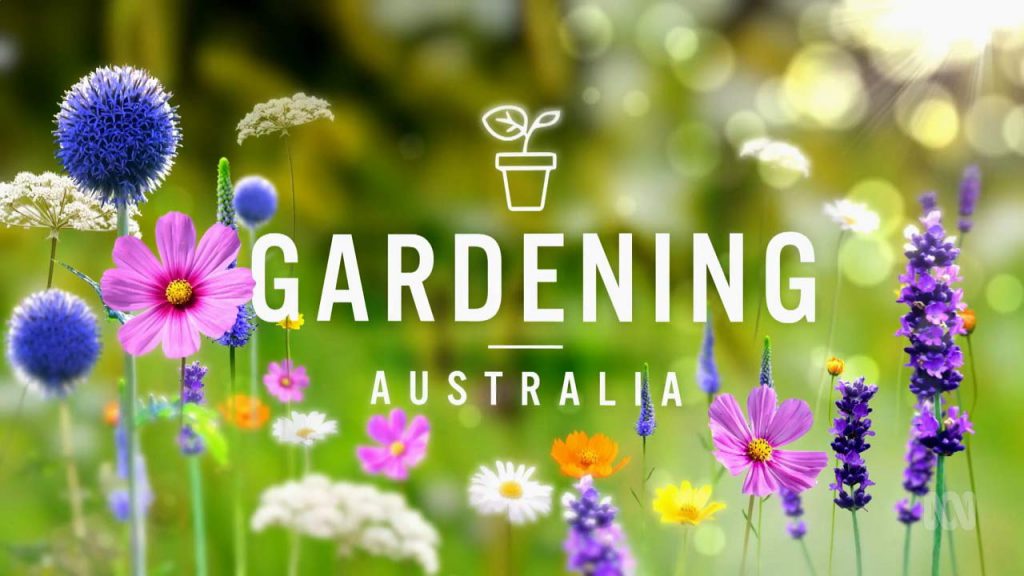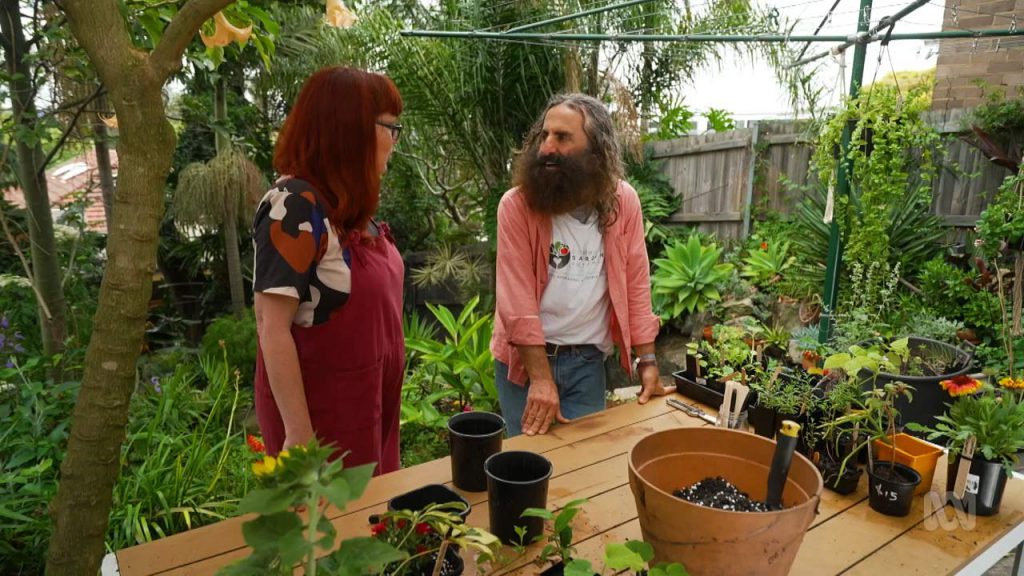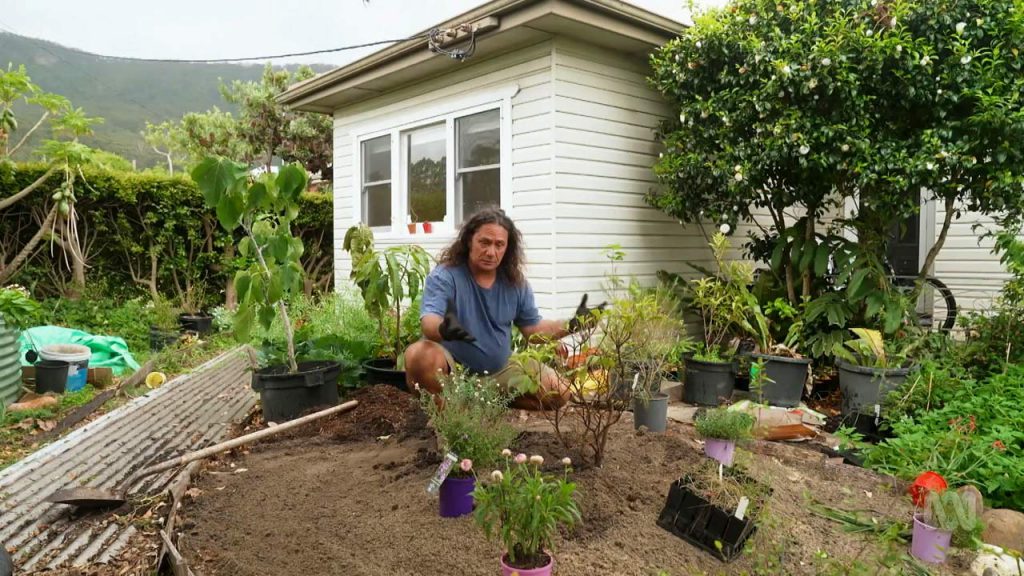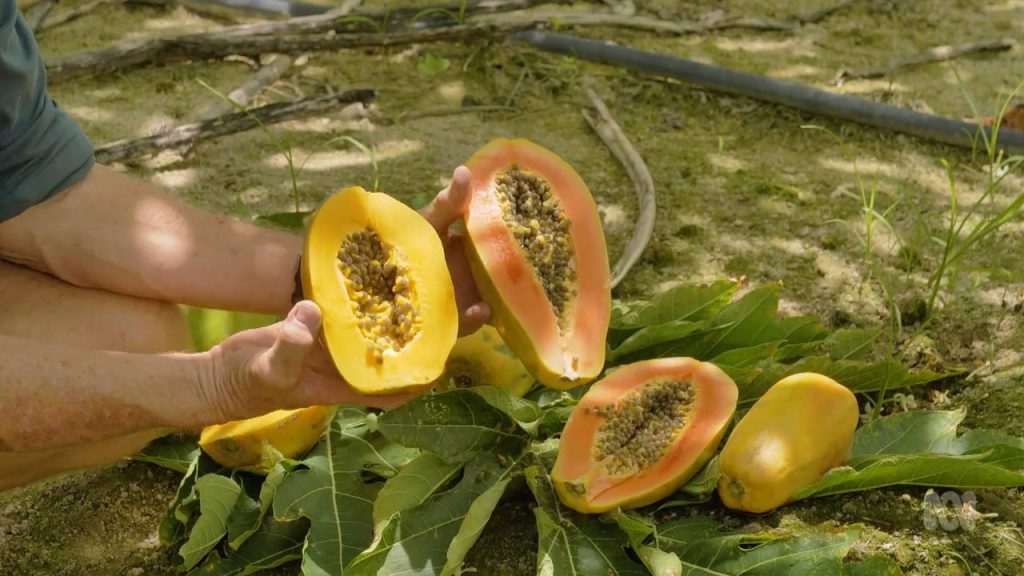Gardening Australia episode 31 2022: Costa and Josh meet at a community farm; Millie tours regional biodiversity links; Jerry shares tips to flood-proof a garden; Jane coppices eucalypts; Hannah visits a communal patch; we meet a collector and his plant pad.
Inspiring, entertaining and full of practical advice, join Costa Georgiadis and the team as they unearth gardening ideas, meet avid gardeners and look at some of the most inspiring gardens from across the country.
Gardening Australia episode 31 2022
Social Farming
Costa meets up with Josh at an urban farm in the heart of vibrant Fremantle created to nurture the social, physical, and mental health of the community. Costa and Josh meet up to visit a very special community farm project in vibrant North Fremantle on Whadjuk Noongar Boodja. The farm is constructed atop an old bowling club and is located between Port Beach and the Swan River. This site was formerly a Chinese market garden in the 1920’s, and has been running as a farm since 2016, though it has evolved according to the needs of the local community.
Amy Warne is the farm manager and is a very skilled farmer and community operator who has catapulted the current iteration of the farm into the successful model that it operates at today. The ‘social farm’ model is different to the average community garden in that Amy manages all of the garden beds, aiming to maximise production to feed as many people as possible out of the small space. Locals who pay to be members of the social farm are invited to come into the space and pick produce whenever they like. There are 200 full members and heaps more on the waitlist, indicating the popularity of this model. Others can opt to volunteer on the farm with Amy to get their own taste of the vegies. Costa meets some of these special gardeners—Helen, Penny, and John—to learn about how spending time working at the farm help connect them to their community and food.
Connect the Plot
Millie links up with a group of regional landowners working to protect and reconnect biodiverse remnant vegetation across the landscape. Millie is in Central Victoria, along the Campaspe River, to meet Dr Sophie Bickford, a conservation ecologist who has been working with Biolinks Alliance. This work aims to create large-scale connections of conservation areas (or ‘biolinks’) across different tenures of landowner throughout Victoria.
Millie and Sophie explore one of these areas within a 14-kilometre corridor, a beautiful pocket of native grassland characteristic of this part of central Victoria. Millie reflects, ‘the area is filled with spectacular little islands of remnant vegetation like this one, they are so rich with species. But they are in a sea of landscape that is so incredibly changed, and without being connected to other ecosystems, this biodiversity can’t last’.
Sophie emphasises the need for biolinks to protect and retain these landscapes in the future, ‘it’s a bit like an animal in the zoo, it’s very pretty to look at but it’s not very functional, it’s not really going to be able to survive well into the future.’
These ecosystems need to support animals like sugar gliders and brush-tailed phascogales which move around the landscape to find food, mates, and to escape bushfires. Sophie emphasises that biolinks are nothing new, ‘we must remember that our landscapes were always once connected, but we fragmented them with agriculture and roads and urbanisation. Biolinks is about re-establishing these ecological connections that were once there and were once so important for the persistence of species.’
Tomato Treatment
Tino stresses tomato seedlings to encourage early fruiting. Tino shares a tip from some very experienced gardeners—both his father and Peter Cundall. When you start off tomato plants in a pot, give them just enough food and water to survive. Stress them, so they flower earlier. When they flower, stick them straight into the ground and give them everything they need.
‘Treat them mean, to get them to fruit early; and treat them kind, to make sure they fruit well!’
Flooded with Ideas – Gardening Australia episode 31 2022
Jerry visits an architect who is an expert on designing homes for flood resilience to offer some advice on how to flood-proof the garden. Devastating floods in Queensland and NSW left many asking how we can better prepare ourselves in the face of a climate that’s becoming more extreme and unpredictable. This extends to where we choose to live, how we build our homes, and also how we garden.
Sam Bowstead is an architect who’s built his practice on helping people design buildings that are more resilient to floods. “We’ve been doing it since 2011, which was a bad flood. In the 10 years we’ve seen what we do work in a major disaster, and been able to prove the approaches have worked”.
Elderflower Cordial
Sophie creates a refreshing drink from garden flowers. There’s nothing more refreshing than sitting down after a long day to a delicious cool drink made from your own flowers and produce. Sophie shows us how easy it is to make an Elderflower cordial.
The elderflower is a vigorous, soft-leaved deciduous shrub that can grow to 3-4meters high. In some parts of Australia, elderflower can have a weedy tendency. To make sure it doesn’t overrun your garden, check its suitability to your area, choose your position carefully or grow it in a pot. A great way to stop berries growing and spreading their seed is to prune their flowers for a delicious drink. Prune flowers on a dry sunny day for the best flavour.
Short Cuts – Coppicing Eucalypts
Jane demonstrates how to multiply tree trunks by creating a coppiced eucalypt, perfect to keep trees fun-sized for smaller gardens. Coppicing is an old method of farming trees, that involves cutting the branches of trees right down low. Many eucalyptus will respond to this treatment. Jane is looking at a Eucalyptus cladocalyx ‘Vintage Red’, a cultivar with red foliage. Normally this tree would grow 6-8 metres high, but coppicing it regularly keeps it to a small size and continually producing attractive new growth.
Coppicing took place close to the base with a saw, and new growth can come from epicormic buds down the stem. Every couple of years, some of these stems will be removed to trigger the growth of more. Another coppiced Eucalyptus is Eucalyptus pulverulenta. This is a mallee plant, so the underground storage of the plant produces new shoots after coppicing. Jane is using a long-handed lopper and a tree saw to give a tidy up to a eucalyptus that was coppiced long ago.
Patch Mates – Gardening Australia episode 31 2022
Hannah visits a productive patch that is shared between four friends showcasing their different gardening styles, while respecting their shared values. Nestled high above Hobart, Mount Nelson is a chilly pocket of suburbia in the bush. What was once a huge house on a 1.4 hectare block here, is now three smaller dwellings for two couples, a large productive garden and plenty of bushland habitat.
Tracey and Lynda occupy one house with their friends Michael & Robin in the second. The third is rented out to artists and tourists to fund the groups environmental and social advocacy projects. Tracey says, “We were really keen to get into the vegie gardening, so we built a couple of beds at the far end and started moving up the hill. But then we were faced with having to deal with the wildlife that’s up here, which is just such a beautiful part of Mount Nelson so we ended up enclosing the garden so that we could have space and the animals could have the rest of it.”




